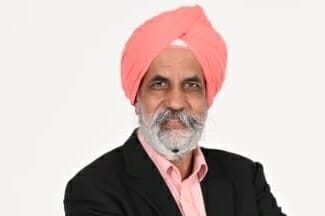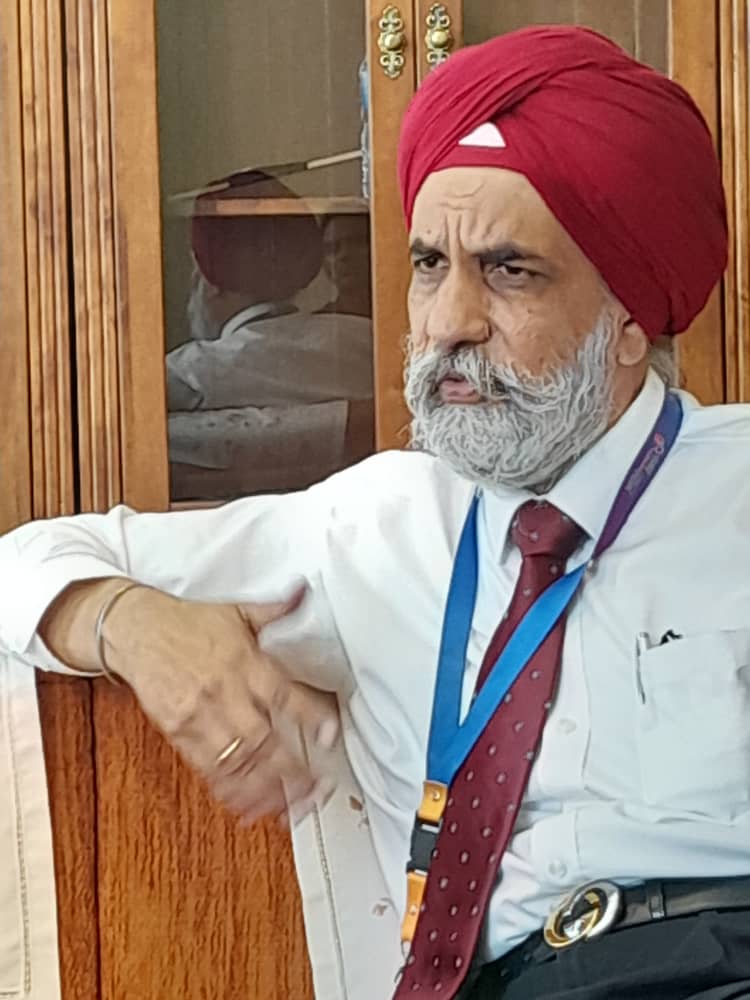Media and Corporate Communications Director at Information Department, Dr Amerjit Singh S. Bhag Singh , calls it a day after 35 years in service.
BusinessToday spoke to retiring Dr. Amerjit Singh S. Bhag Singh who served the government for over 3 decades on how the media landscape has changed from the early days to now where social media and digital content seem to occupy the
narrative in government communications.
To spend one’s life career path for 35 years at one single organization is not often heard of nowadays. But Dr Amerjit who started his career as an Information Officer with the Government and working his way up in the corporate communications /PR career to become the director of Jabatan Penerangan did just that. Throughout his experience, the PR man was assigned to various ministries in similar capacity before finally ending is stint with Information Department which falls directly under the purview of Ministry of Communications and Multimedia.
Having seen massive transformation over the years, without a doubt public relations and communication is one of the most important tool for the government to communicate its initiative and programs to the people. Dr Amerjit while is heading an enviable job does understand the responsibility that comes with it, after all the information and managing misinformation could lead to many sleepless nights for many practitioners.
“After graduating from University Sains Malaysia, I then started off as an Information Officer, people used to think that Information Officer had to do spying. No, it was not that. As I progressed in my career life, I was posted in corporate communication departments of various ministries. In my 35 years of civil service and PR and communication practice, the media landscape has changed so much. When I started off in 1987, there was no internet and social media. The work was from 8 a.m. till 4:30p.m. for civil service. After work, you move around freely without being contacted by your superiors. Specifically, work-related communication only happened during the working hours only,” he described.
“But the whole scenario changed around year 2000 in the media landscape,” he then continued.
The rapid growth of PR in the last 30 years can be traced and correlated with the introduction of technology, specifically the internet. New technology opened up new channels and new ways of operating and shifted the profession and practice in ways that could not have been imagined when they were first introduced.
Sharing on the one major prerequisite for public relations and communication work, Dr. Amerjit said, “The mindset (of anyone pursuing this job or career) has to be open for changes and evolution and revolution of the media landscape and be committed for and ready to embrace whatever changes that may come into the way. It wouldn’t be possible to carry a task or handle it well without the exposure and confidence of utilizing the technology or app such as Facebook, Instagram, Twitter, Tik-Tok, Zoom and the likes.”
“Digitalization in the department has resulted in the number of hard copies reduced and e-books, on the other hand, are on the increasing trend. In short, digitalization is the norm now.”
Indeed, effective public relations and communications has eventually evolved from newspapers which attention-seeking mode to where it is now, through the years. Now that successful public relations and communication has put much focus or a large majority of their time on content creation. With the development of the internet, the landscape of public relations has gone through major changes drastically. Successful public relations and communication has moved from a broadcast-model to an engagement-model, in essence, it is no longer a one-way communication but a two-way conversation between the media and public. On this regard, as we wonder how well information is received on the ground by the public, we asked Dr Amerjit this question.
“We don’t conduct evaluation on every piece of information disseminated to the public. We only conduct surveys on certain information disseminated to the general public and gauge how well the dissemination of information based on the surveys conducted on random selection of public.”
Case in point he added, during the pandemic, there were multiple media platforms and various sources available for information on COVID-19. To fight the pandemic and reach public consensus, it is important that to identify he sources of information for COVID-19 used by the public and those that are associated with building public confidence and positive perceptions toward the government. Thus, identifying people’s media preferences is key to building public confidence and planning for successful national health intervention strategies.
Managing information and sustaining public confidence is important during a pandemic. Locals used television and internet news portals primarily to access information on COVID-19.
Censorship and Freedom of Speech
Much have been said on censorship and freedom of expression of the local press, BusinessToday asked his view on the censorship on the press and whether there will be a time when press is given greater freedom to write.
“Freedom comes with responsibility,” he opined.
“The press can write whatever that they wish to write or want to write. But always bear in mind that you are responsible for what you write.”
Having spent three and half decades on career path of public relations and communications, we asked him about the highlight of his career would be.
“In the past, the PR and corporate communications of Ministry of Tourism and Culture post was an open post, that was to say it was open for talents from the private sector as well. When I was appointed as the head of PR and corporate communications of Ministry of Tourism and Culture, my superiors were so pleased with the outcome of my work, and as a result the post has been a closed position ever since then,” he answered with much satisfaction and sense of accomplishment written on his facial expressions.
“Share with us the experience of crisis communication for MH370 incident,” BusinessToday touched on this issue since he mentioned this subject.
“Yes, I remember that year was Visit Malaysia Year. And because of this tragedy, so many lives were lost. The relationship between China and Malaysia plunged into a cold point. What we did that time was empathetic communication to build the relationship between China and Malaysia. He recalled how the then Minister of Tourism spontaneously hugged the ambassador of China to Malaysia at that time, a strong moment captured on video and stills. This was great example of communicating empathy, the image captured a sensitive point and eventually thawed emotions back in China among its people.”
As for future of PR, it will evolve with time as humans need to tell stories and companies want to manage their image and communications hasn’t changed. While print publications still exist, many are disappearing in favour of online formats. We cannot predict what technology will appear next and what transformation it will create for public relations and communications. Only the future will tell what new format it takes.
For sure, the where and how the stories are communicated will evolve with time.
Dr Amerjit retires in June after serving for 35 years in the Malaysian Government. He plans to continue offering his consultancy and sharing his expertise and experiences in the sphere of media and corporate communications.









